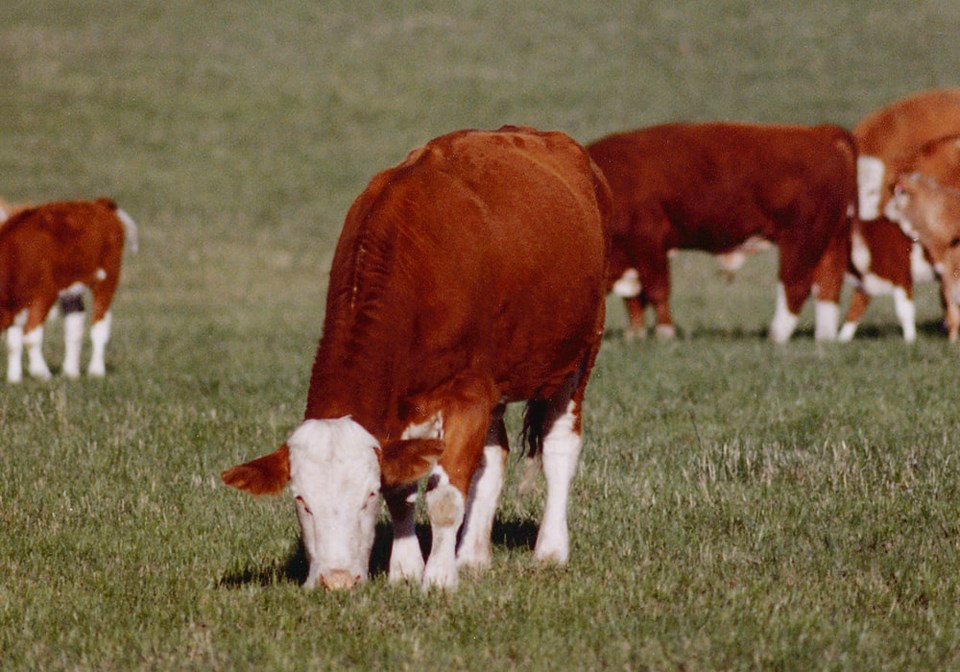WESTERN PRODUCER — Cattle producers are adapting to dry conditions persisting across the Prairies but the drought is pushing their ingenuity to the limit.
“We haven’t grown any grass — virtually zero native pasture grew in 2023,” said Brad Osadczuk of Jenner, Alta. “We are pretty good at carrying over from the previous year but we’re down to the wood now…. This is as bad as it’s been in my adult life.”
Osadczuk attended the Nov. 22 Ag Connections conference in Medicine Hat, where it was apparent the dry conditions are having an impact in the heart of cattle country.
He said he’s resorted to moving some of his cattle out of Alberta for greener pastures, but those places are rare.
“When the drought is as wide as it is, that’s tough too and the only other option is to start selling off the main herd,” Osadczuk said.
The Alberta, Saskatchewan, British Columbia and Canadian governments are trying to stem such sell-offs with the AgriRecovery program, which provides funding to producers to try to keep herds intact.
It’s the second time in three years the program has been triggered to deal with the extraordinary costs associated with keeping cattle fed in the West.
Osadczuk is not optimistic that the decline in inventories can be stopped, even as beef prices rise.
“Not in the near future. It’s going to take a long time,” he said. “BSE took out a lot of mixed farmers. They just decided there was less risk, work and stress in being a grain farmer rather than a mixed operation. And then profitability has really taken a toll.”
Osadczuk credited the Alberta government and Agriculture Financial Services Corp. for the work they’ve done on risk management programs for producers.
“Nothing’s perfect but at least we have some tools,” he said. “AgriStability has worked for people during big swings in weather and the weather is the biggest thing.”
The cattle industry has also made huge strides in sourcing feed, especially with imports of corn feed and distiller’s grains from the United States, and feed barley prices are coming down.
Performance Seed president Vern Turchyn said producers looking to grow forage crops should prepare for the possibility of continuing dry conditions and plan to maximize the use of their land.
“I’m mortified by the water situation for our irrigation program,” said Turchyn, who presented at the Ag Connections conference on drought proofing forage supplies. “People don’t realize our reservoirs are empty.”
The unpredictability of southern Alberta weather offers some hope for relief, he said, but the current prognosis is not good.
“All we need is a few rains, which can be a life changer,” said Turchyn, adding that current forage inventories of native pasture are “non-existent.”
He suggested a cereal-forage mix could be grown on some land, instead of the usual crops, as an option.
“Whether it’s stockpile grazing or just grazing or greenfeed, that, I think, is a good place to go,” said Turchyn.
Federal and provincial programs to help with cover crops are available, which Turchyn stressed could help ease the situation.
“I think we need to put in as many appropriate cereal cover crop mixes as we can so that we can utilize that effectively,” he said. “I’d rather pay $70 to $100 per acre in rent with the chance of growing five or 10 tonnes of forage than having to battle through to next fall.”
The region should consider reestablishment of long-term perennial forages while ensuring the investment risks are understood. Those risks are manageable, even in dry conditions, but require adherence to establishment guidelines, Turchyn said.
“We’re in an emergency situation here. We need to get some good, appropriate annual forage into the ground this spring,” said Turchyn.
While Osadczuk admitted producers can be optimistic to a fault about next year, he believes Mother Nature may have worn herself out in beating up producers in all sorts of different ways over the past several years.
“If not, we’re going to have to adjust,” he said. “We’re still here and I can’t say more than that.”
Bookmark SASKTODAY.ca, Saskatchewan's home page, at this link.




